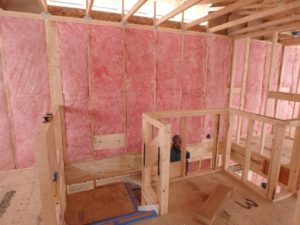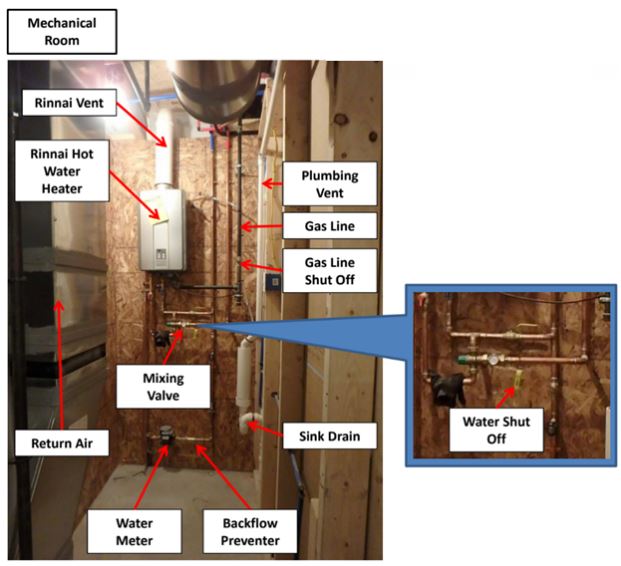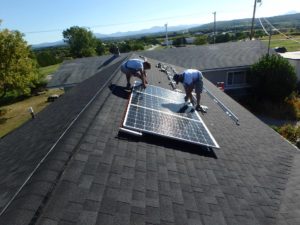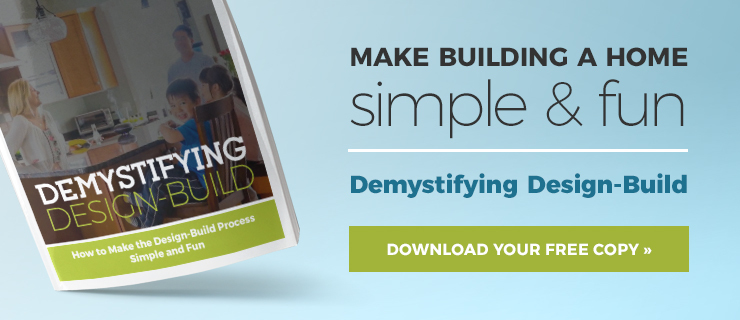Download a PDF of this Article
Solar panels, geothermal heat pumps, wind power—this is what comes to mind when many people think about a “green” home. As these methods of generating renewable energy become increasingly popular in the residential space, they have also become synonymous with sustainability.
But building a truly energy efficient home isn’t about having the latest and greatest equipment. In fact, real efficiency starts in the planning stages.
At Sterling Homes, we help people maximize their home building budget by making smart decisions about the construction of the house. We prioritize spending money on conservation. Using renewable energy is great; reducing the amount of energy your home consumes in the first place is where the real energy savings happens.
When you’re considering building an efficient home, there are several focus areas you will be looking at. To truly maximize your budget, prioritize the focus areas in the following order to build a home that keeps you comfortable, costs less to operate, and stays energy efficient throughout its lifecycle.
Start With the Building Shell

The goal of energy efficient building should be a home that is both comfortable and cost-effective to operate. With that in mind, your very first priority should be creating the best building shell you possibly can. Ask yourself, do you really want to keep paying for heat if you don’t have to?
The building shell, or envelope, is all of the components that separate the interior space from the exterior space of your home, including walls, floors, and roof.
In order to build an energy efficient home, it’s critical to plan and build a tight building shell. If we can keep air from moving through the walls, we can actually reduce the amount of energy your home needs to consume in the first place.
This is why focusing on a tight thermal envelope is critical. The more airtight your home is, the less energy (and money) you’ll need to spend on heating and cooling.
Accomplishing this requires great attention to detail, starting with the planning phase. Even once the home is planned, each person involved—framers, plumbers, electricians, insulators, trimmers, etc.—needs to be focused on the goal of building the best shell possible. A tight building shell will set your home up for efficiency throughout its lifecycle.
Include an Effective Ventilation System
Why is ventilation next on the list? While the right ventilation system isn’t inexpensive, it is vitally important.The right ventilation system for your home will ensure optimal indoor air quality that will keep your home comfortable while also being energy-efficient.
Heat or Energy Recovery Ventilation (HRV or ERV) are commonly used strategies for scaling down HVAC equipment. This is the process of exchanging the energy contained in “used” air inside a building and using that energy to precondition the incoming outdoor ventilation air.
In simple terms, we want an effective, energy-efficient system for swapping out dirty, moist air and replacing it with fresh air.
Select an Appropriate Heating Strategy
The right heating strategy for your home depends on how much we are able to conserve through the two strategies above. We want to build a heating system that is specifically designed to meet the home’s projected heat loss.
This strategy is contradictory to how heating used to be done. Years ago, when homes were often under-insulated, they contained single-stage furnaces that were designed to heat the home during the coldest parts of the year. Whenever the furnace was operating, it was at full-blast.The result was an overheated home and wasted energy.
These days, however, more advanced heating options are available. Variable speed furnaces allow the climate and the size of your home to determine the speed and airflow that are best for your situation.
Even with more advanced heating systems available, the heating load of your home all comes back to the optimized building shell. You spend less on heating when you don’t need as much heat.
Lower water heating and electrical loads
As with your heating strategy, your water heating load depends a lot on the methods you select. Is your water heater gas or electric? Is it tankless? Is it well-insulated? Heating water takes a large amount of energy, but you can reduce the amount you use by selecting the appropriate water heating system. Do you take more showers than baths? If so, drain water waste heat recovery could be a great way to lower water heating costs.

Electrical loads, too, can be influenced by the choices you make about how you want to operate and live in your home. For instance, obviously you could reduce your electricity consumption by using a clothesline instead of a dryer—but for most people, that’s not something they would want to do!
You don’t need to go to the extreme end of the spectrum in order to reduce your electrical loads. By choosing energy efficient appliances, you’re lowering your home’s demand for electricity. You can also take more detailed measures, such as connecting all of your outlets to switches that you can turn off to prevent “ghost loading.”
You may notice that water heating and electrical loads are quite low on this list. Because much of your home’s water heating and electrical demand is based on your lifestyle and your appliance choices, these are upgrades that can more easily be made over time. It’s much simpler to install a more efficient water heater than it is to change your home’s shell.
Add renewable energy

Finally, renewable energy is at the very bottom of the list. This may be surprising to some people. After all, this is the “sexy” part of green building—passive solar, solar water heating, wind power, and photovoltaic power.
There is a very good reason that this renewable energy equipment is the final consideration when building an energy efficient home. When you are designing and building a home from scratch, you can get the full impact of all of the factors above; a tight building shell, effective HVAC, and low water heating and electrical loads. The goal is to maximize your budget while still creating a home that is comfortable and cost-effective to operate. All of this careful planning from the beginning significantly reduces the need for renewable energy equipment. Once you’ve already covered the rest of the areas on this list, adding renewable energy will have little impact on reducing your energy bills.
If renewable energy is still something that you would like to incorporate, choosing the most effective solution depends on the site of your home and the estimated financial return. Some home sites may be better suited to solar power, while for others, wind may be more effective. Additionally, your estimated return on investment and tax incentives will influence which option makes the most financial sense.
Designing and building an energy-efficient home isn’t just good for the environment; it will save you a significant amount of money during the lifetime of your home. Rather than simply reducing your monthly energy bills, a true “green” home should be built to last. While an energy efficient home may cost more upfront, you need to consider the total monthly operating cost of the home. Your slightly higher monthly mortgage can almost always be offset with decreases in energy costs. This is especially true when comparing the costs to operate an old, drafty house. The sticker price may be lower upfront, but the lifetime cost will usually be higher.
By focusing on the building shell over equipment, you’ll be able to maximize your budget while still creating a comfortable, efficient home, and healthy home.
Luckily, when you build with Sterling Homes, you don’t need to become an expert on green building. We handle every aspect of making sure your home is energy efficient. In fact, Sterling was one of the first major Chittenden County builders to begin certifying all of its homes to the U.S. EPA ENERGY STAR Home standards and has certified well over 150 ENERGY STAR Homes since 2001 and over 50 homes to the National Green Building Standard.
We are your trusted guides through the process of designing and building an efficient home, and can help you make the most of your budget to get a “green” home you’ll love. If you’d like to start the conversation about building your green home, contact Sterling Homes today.


